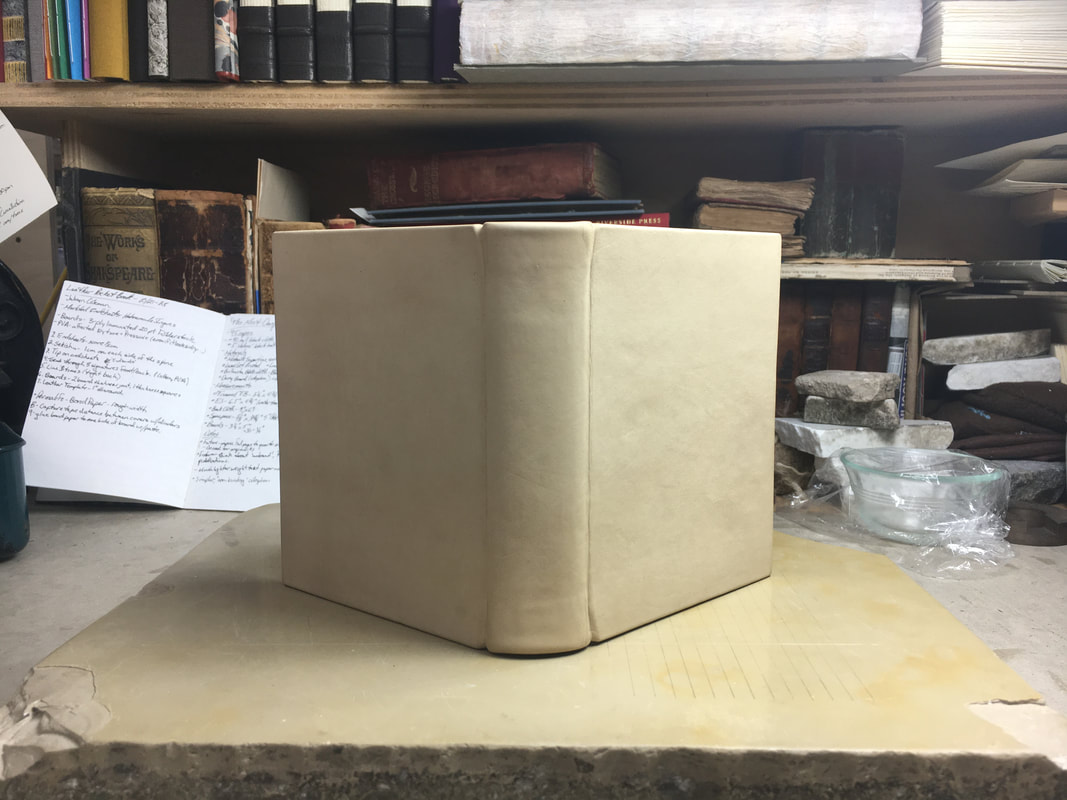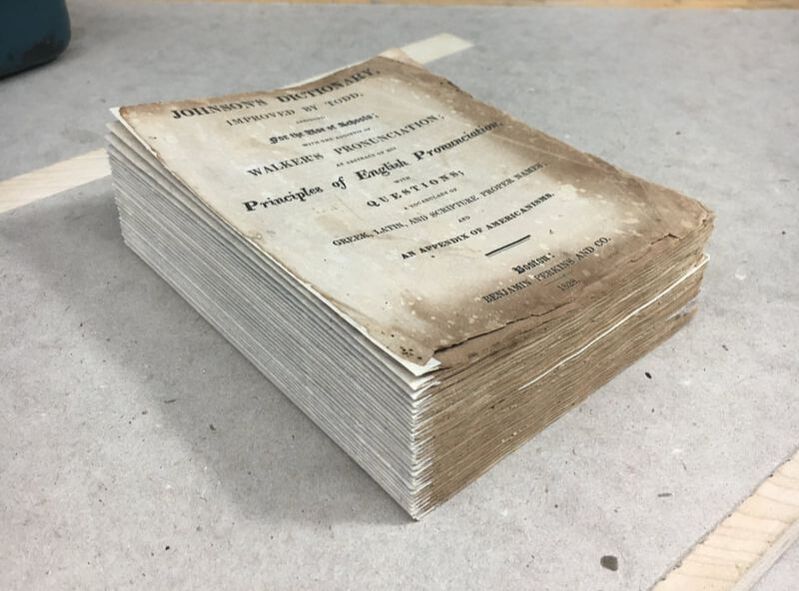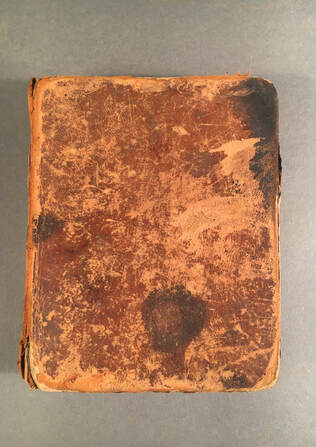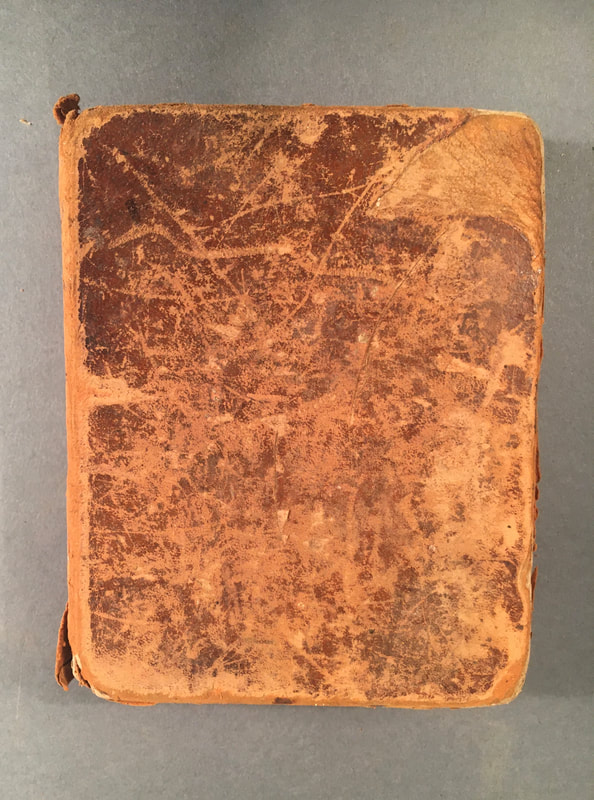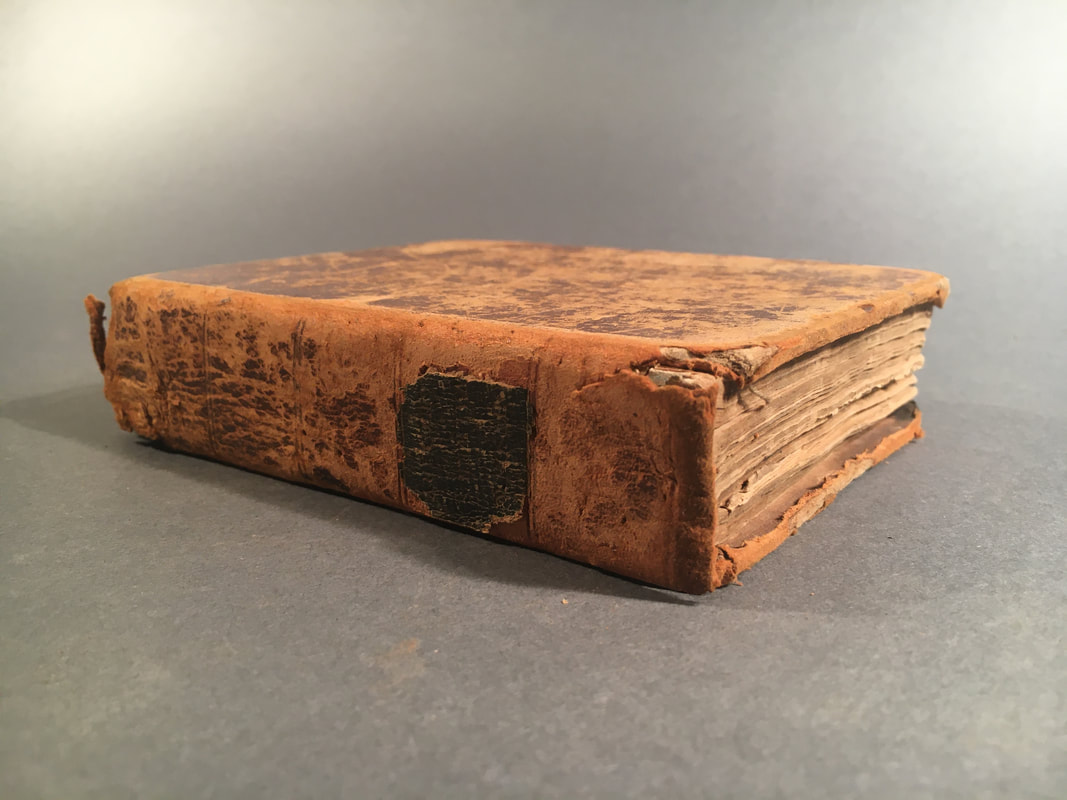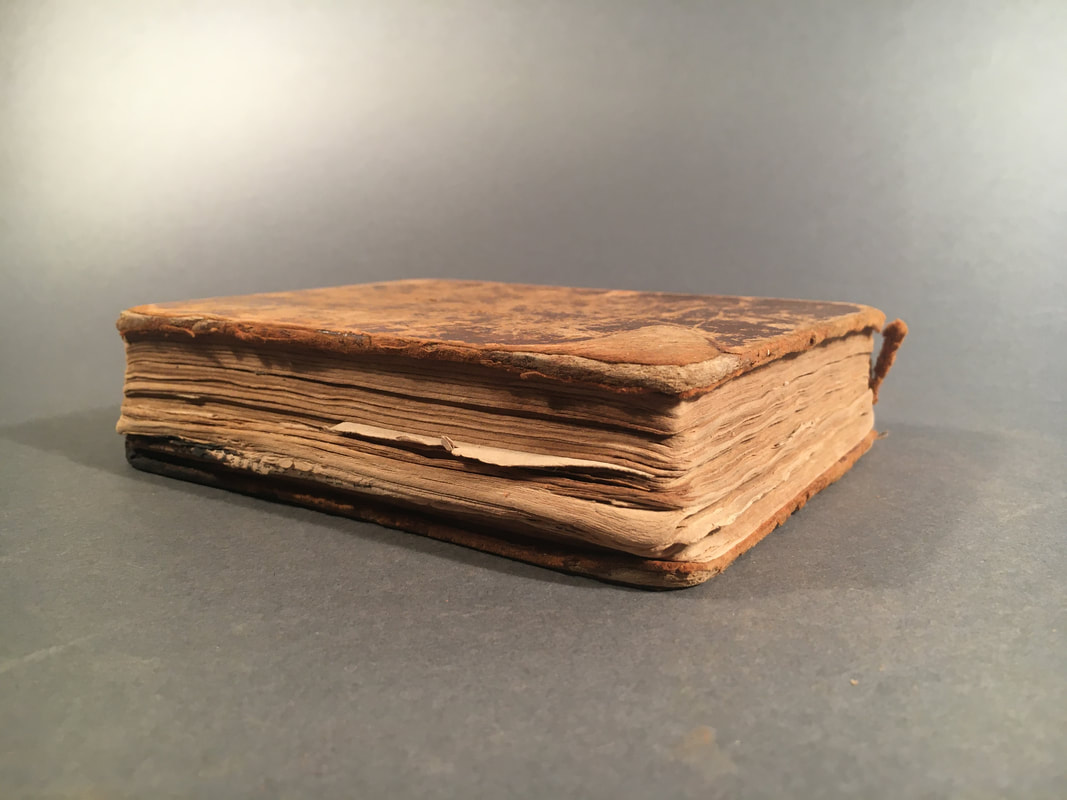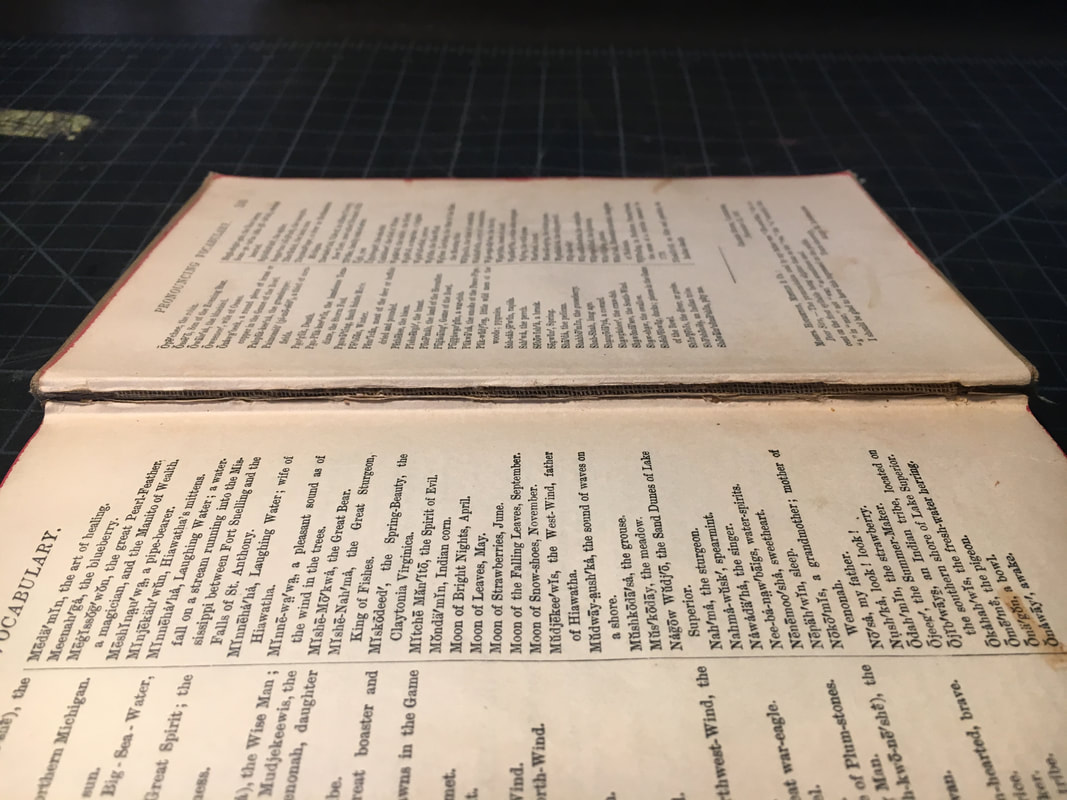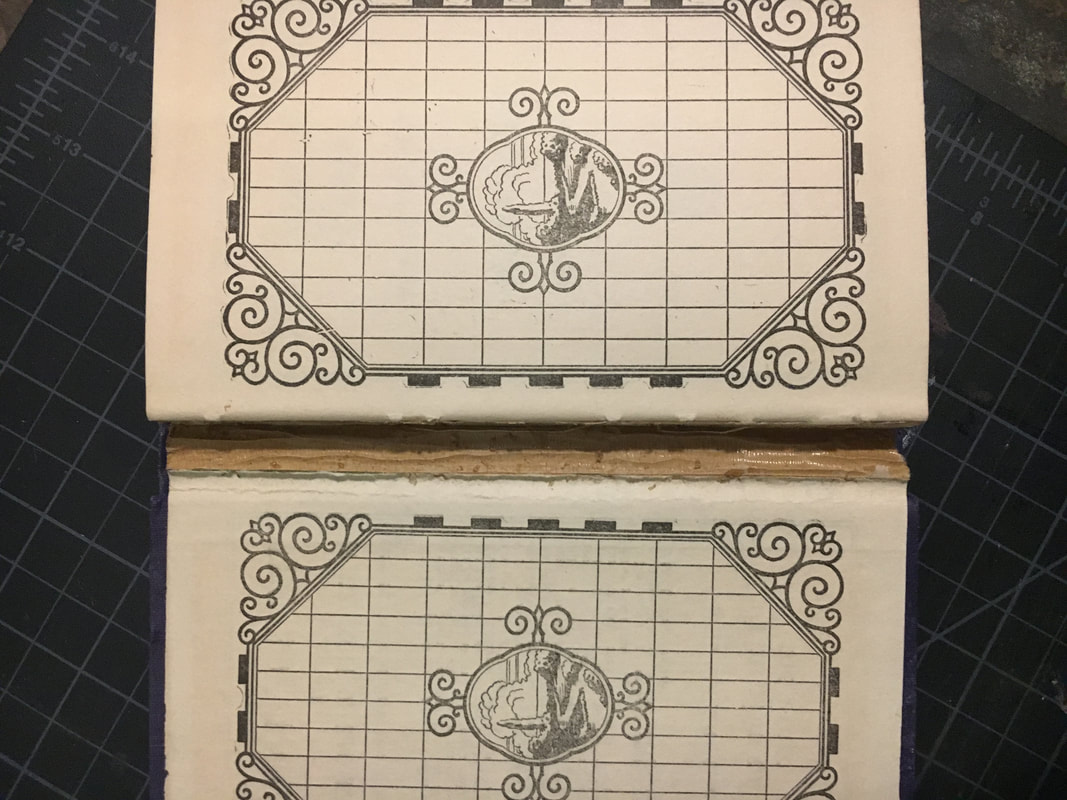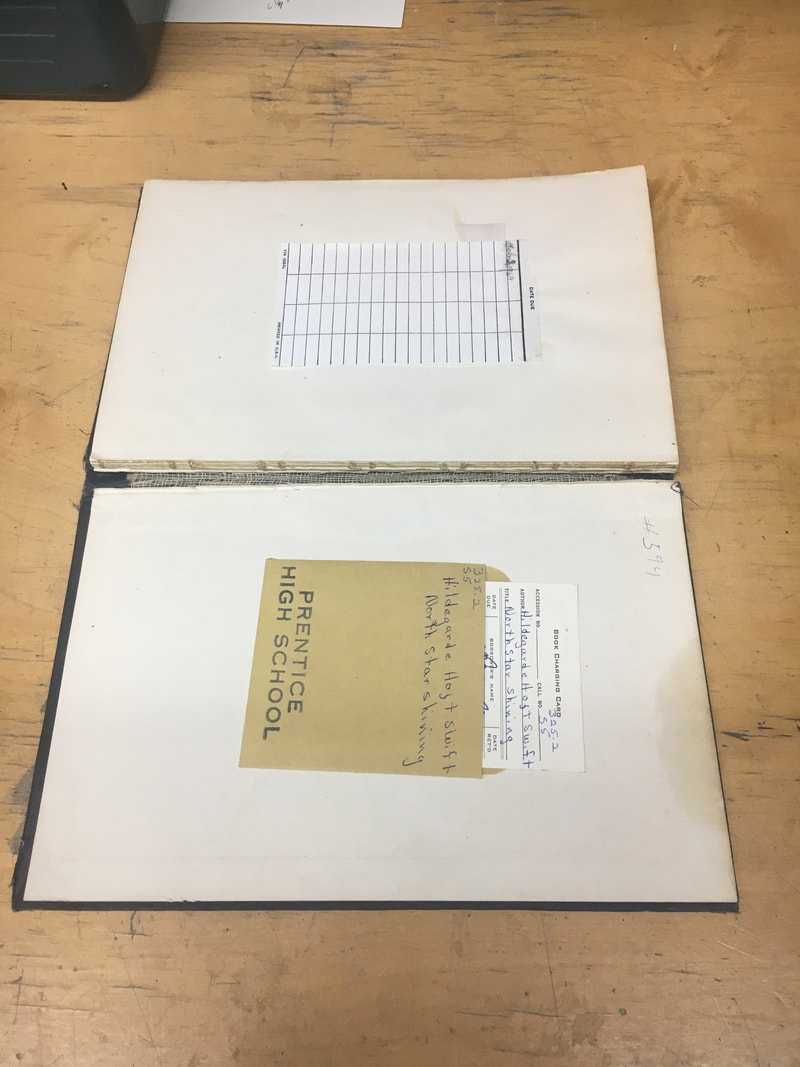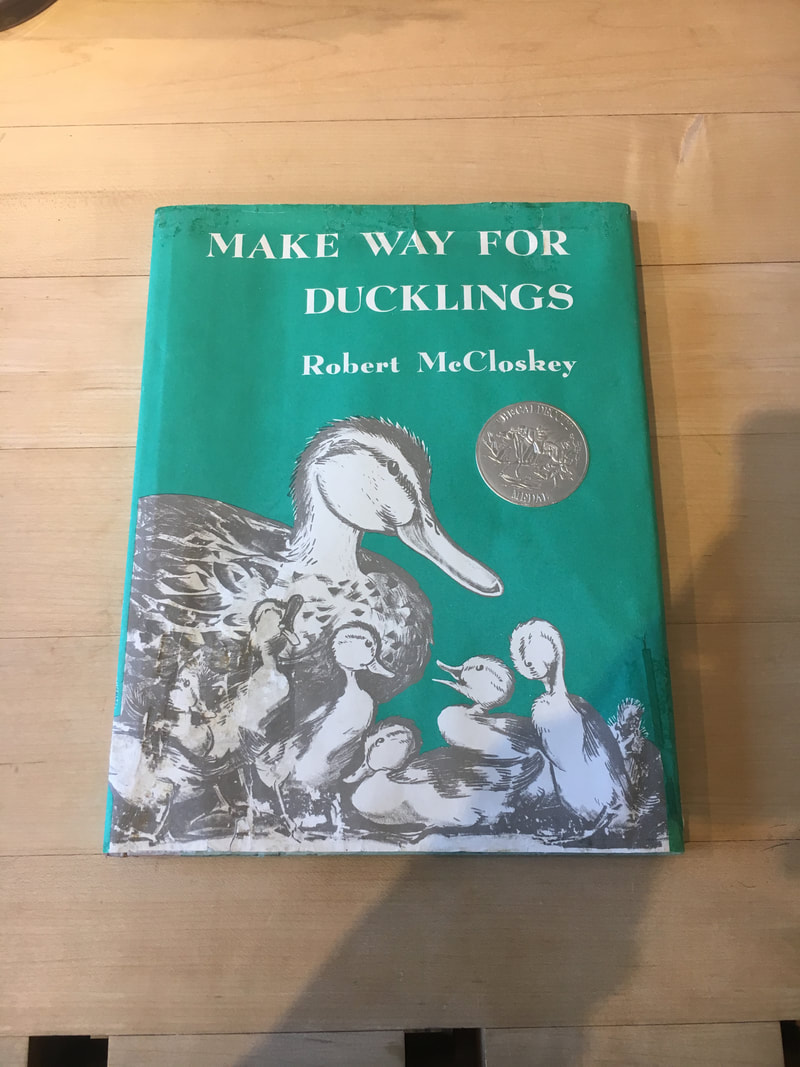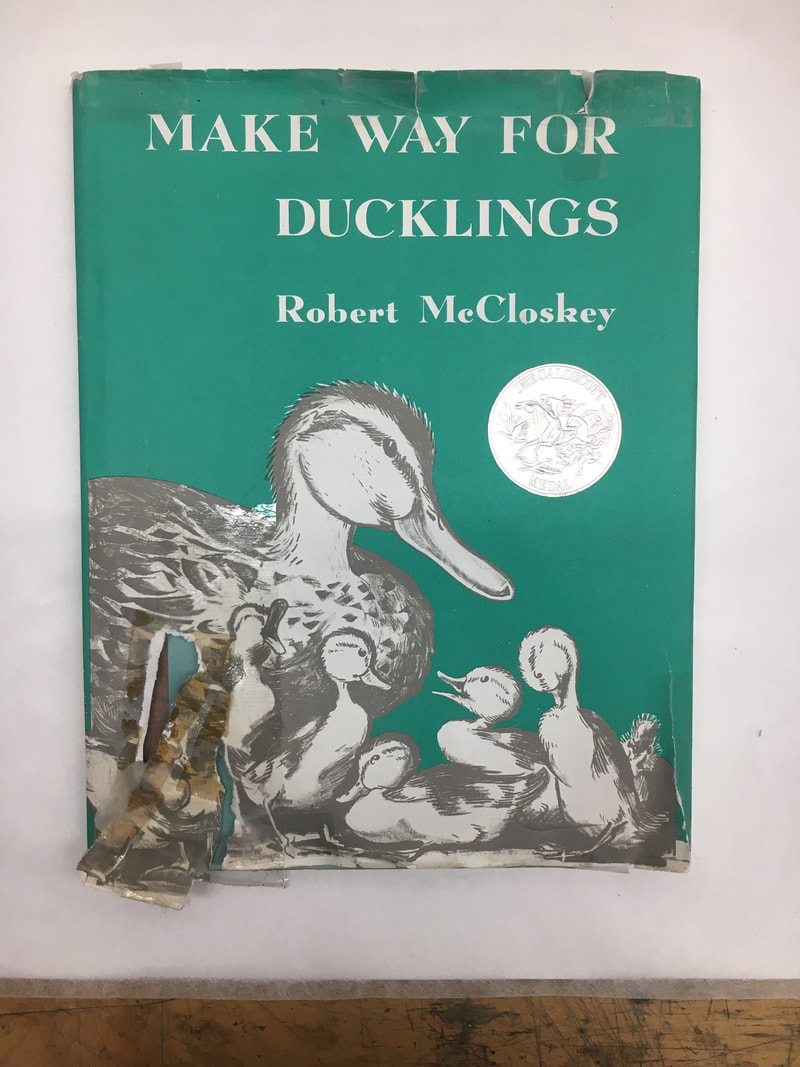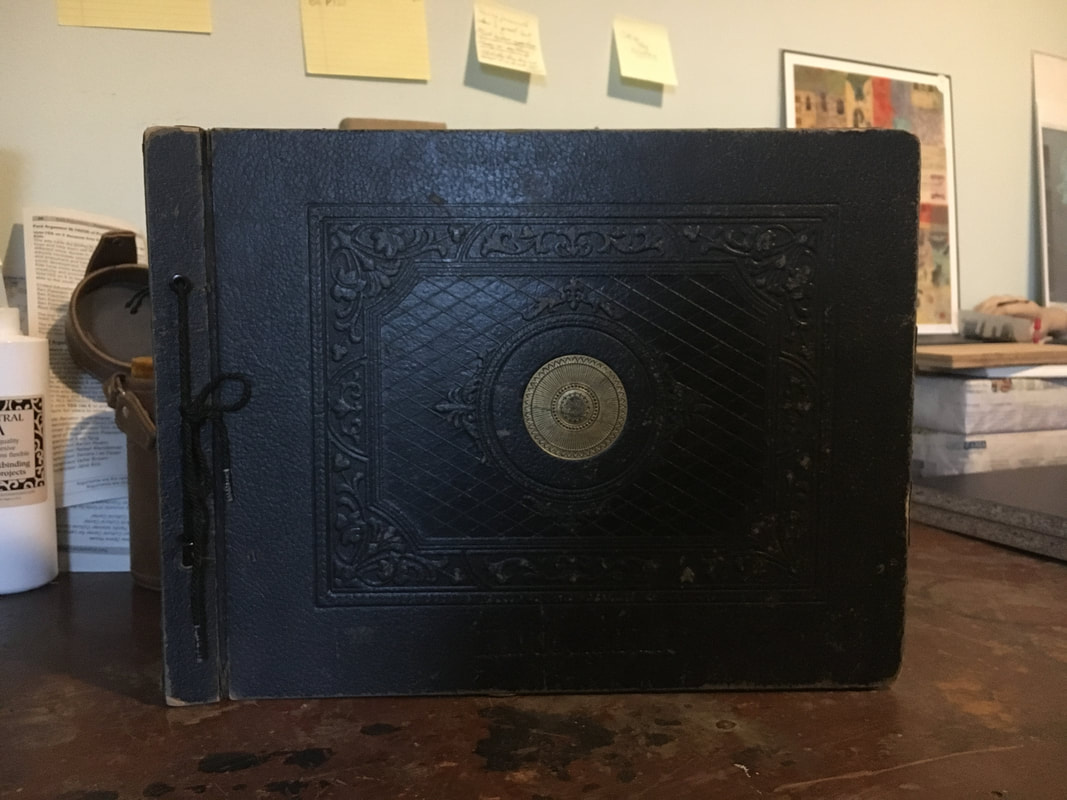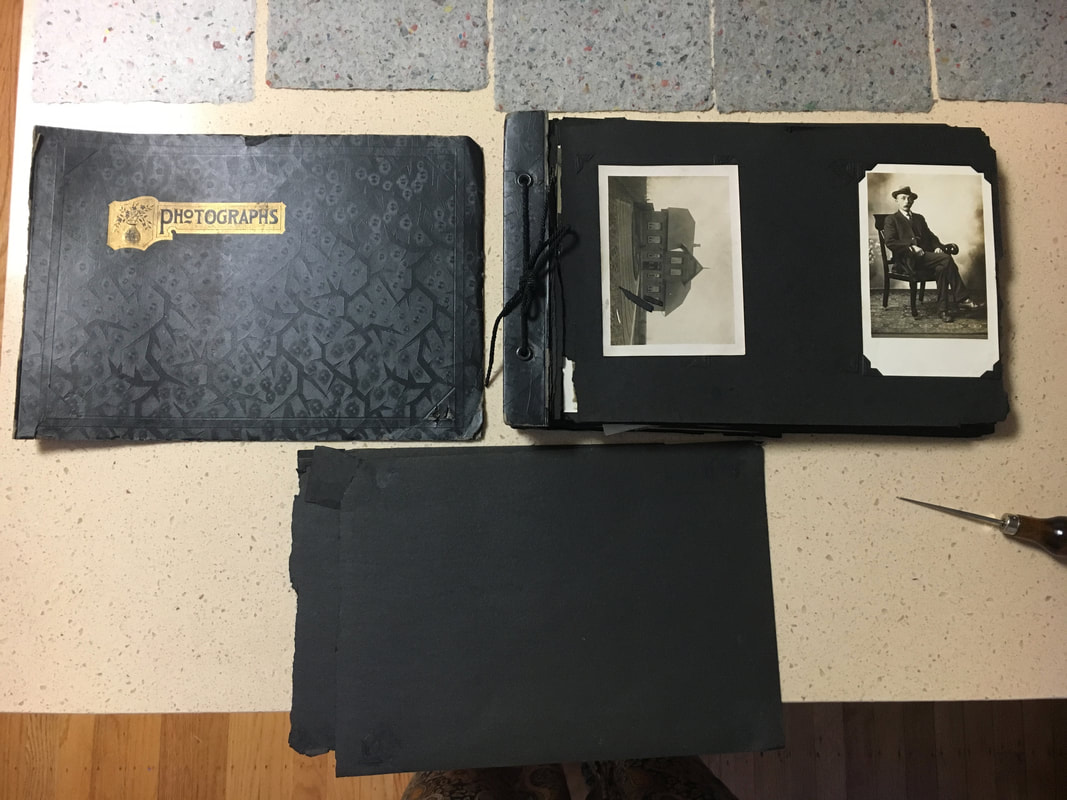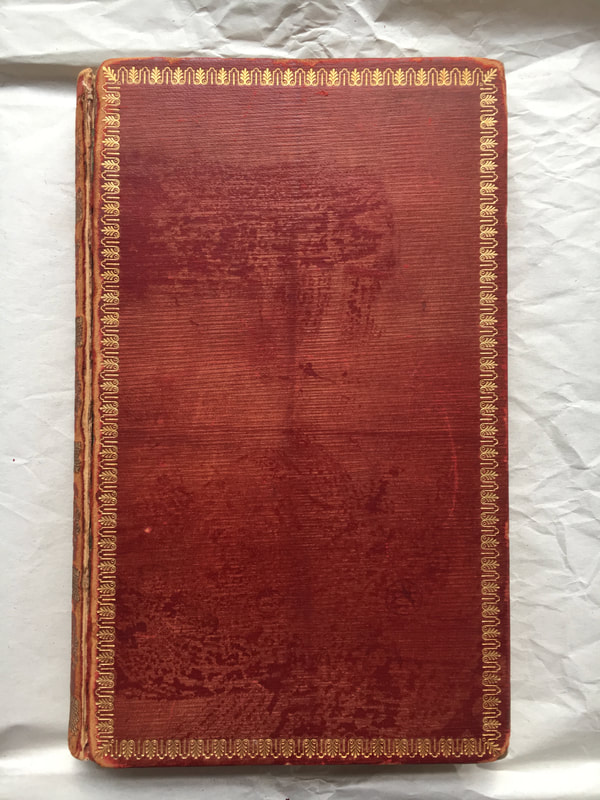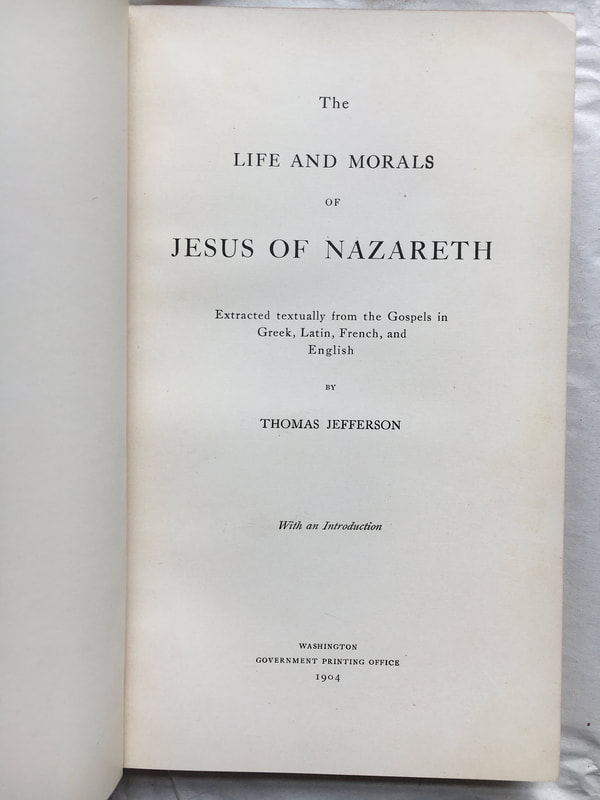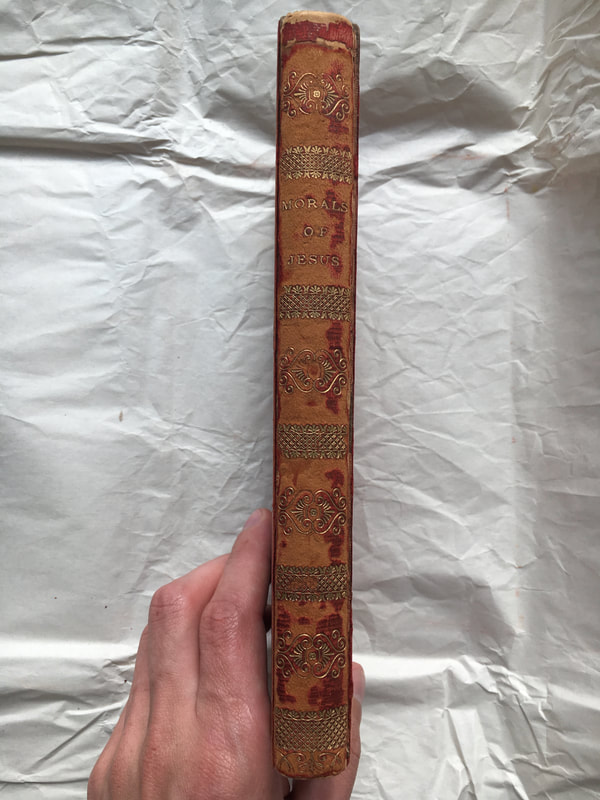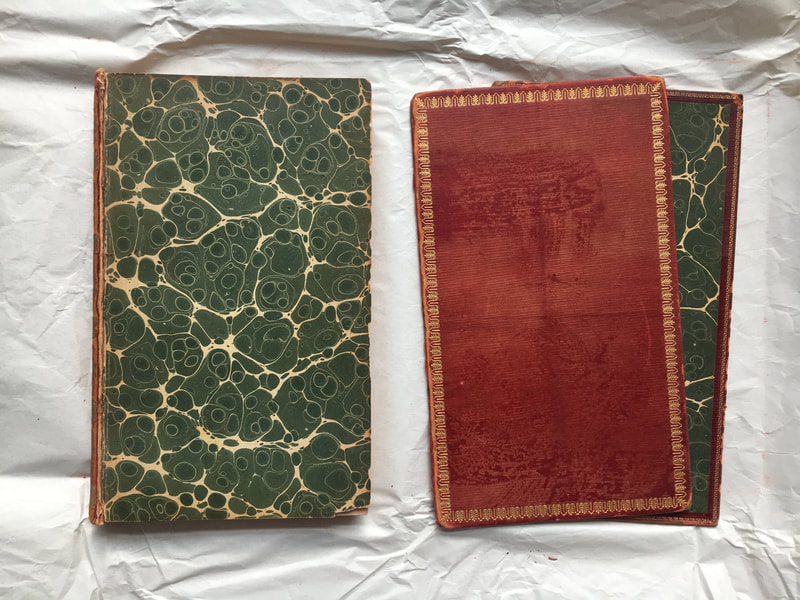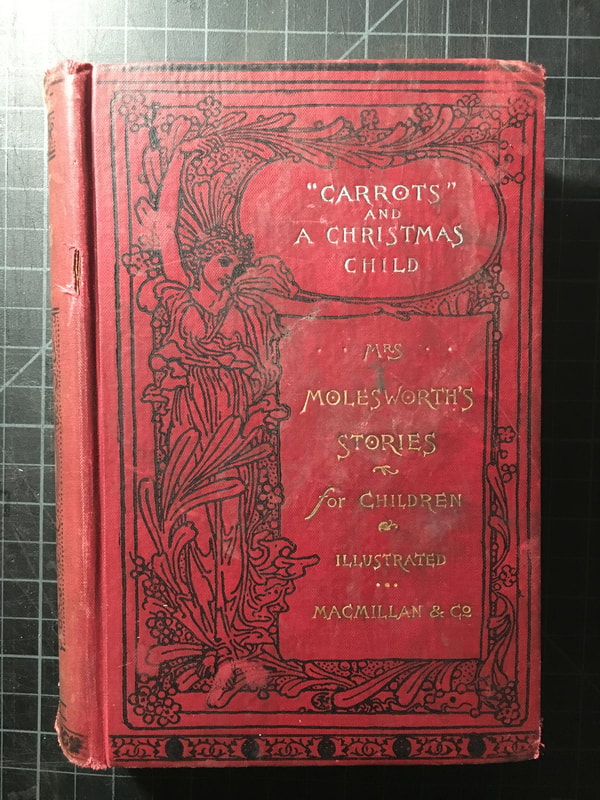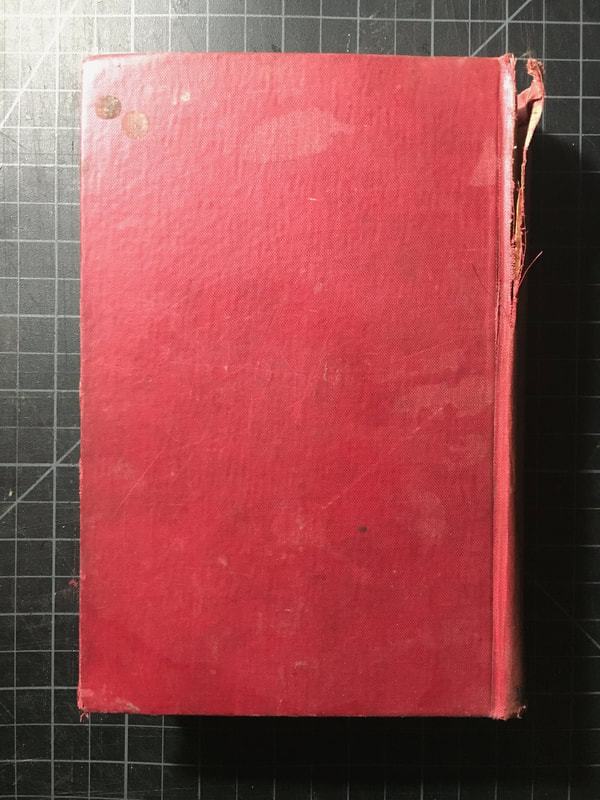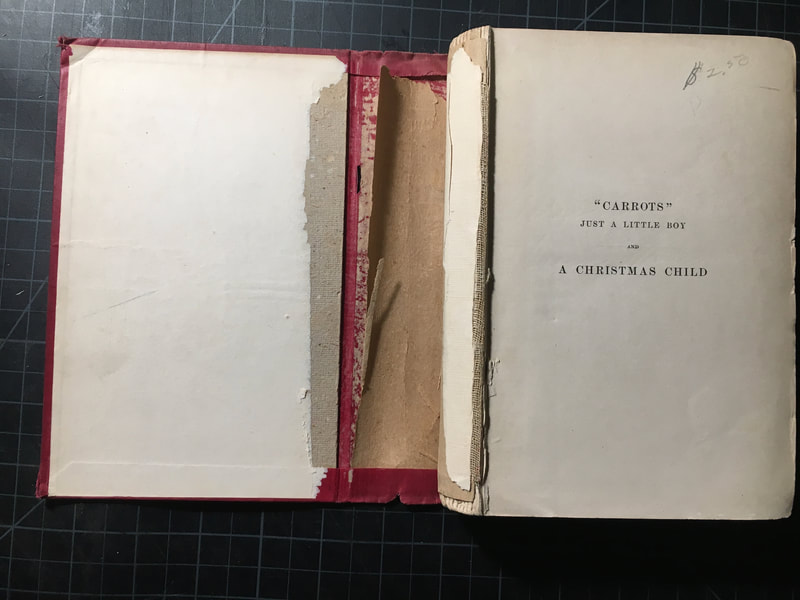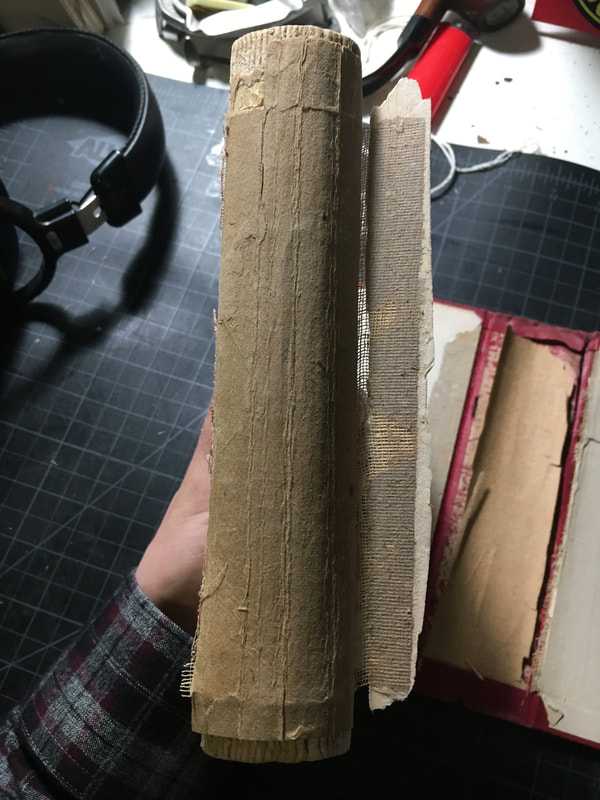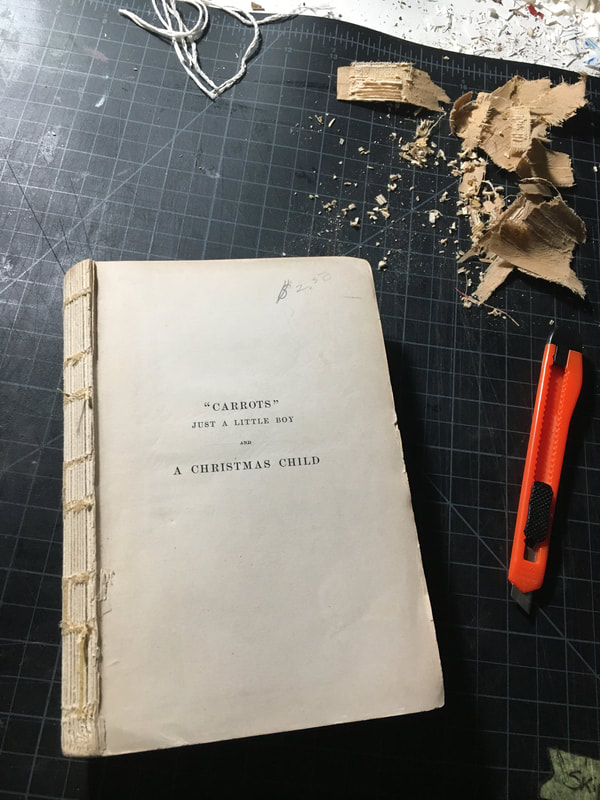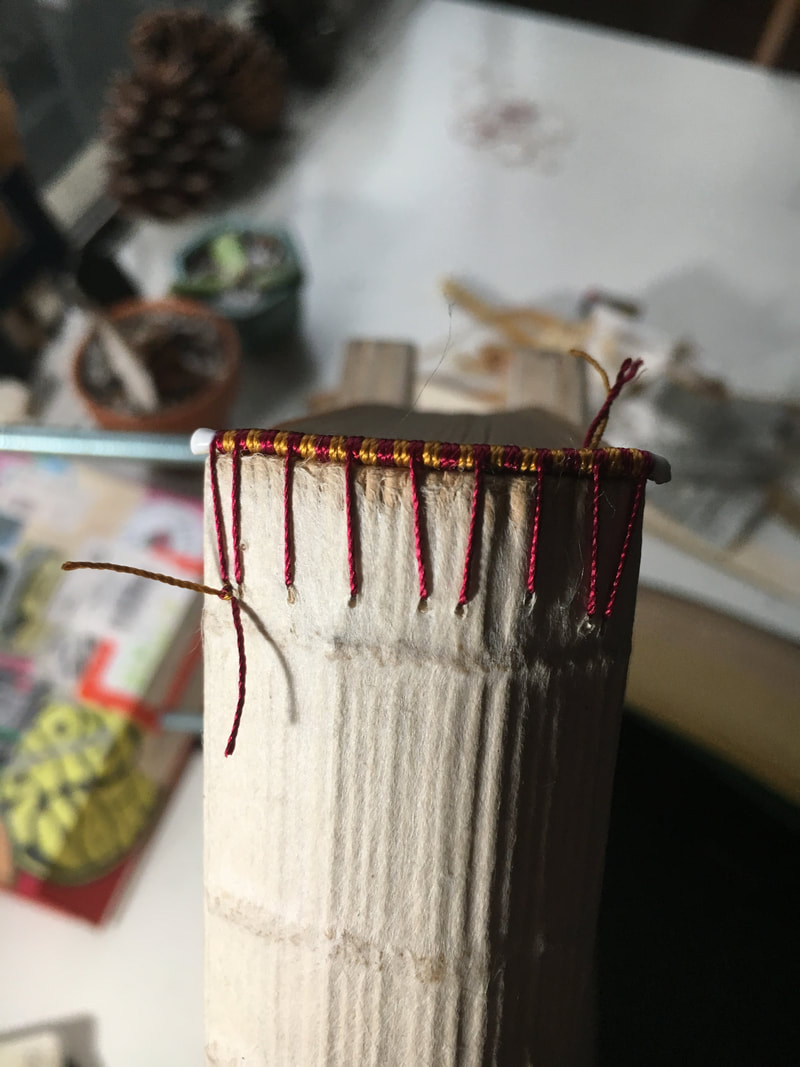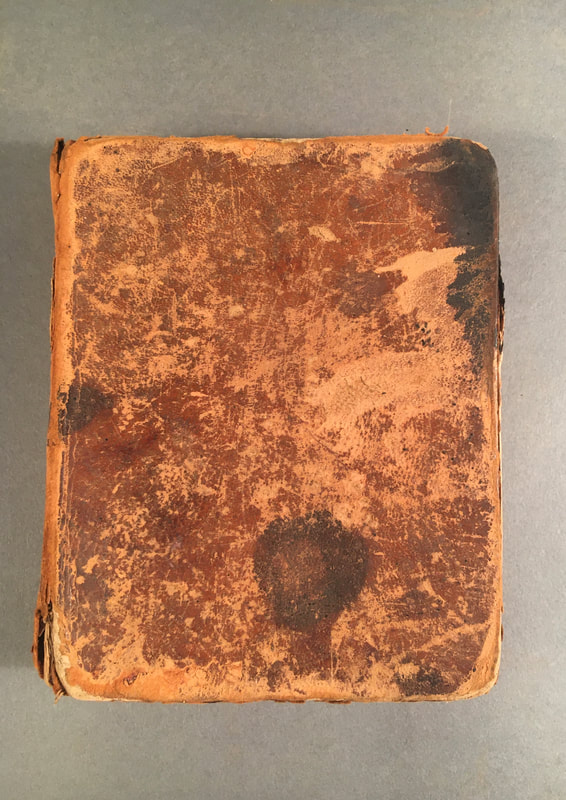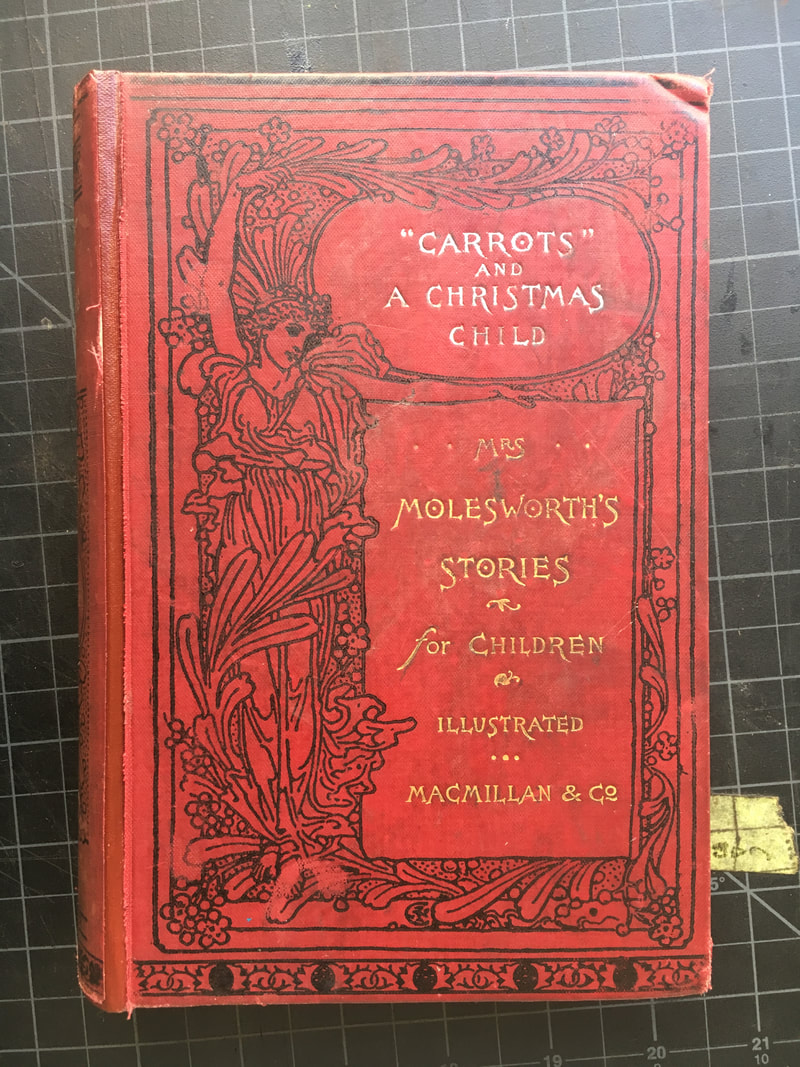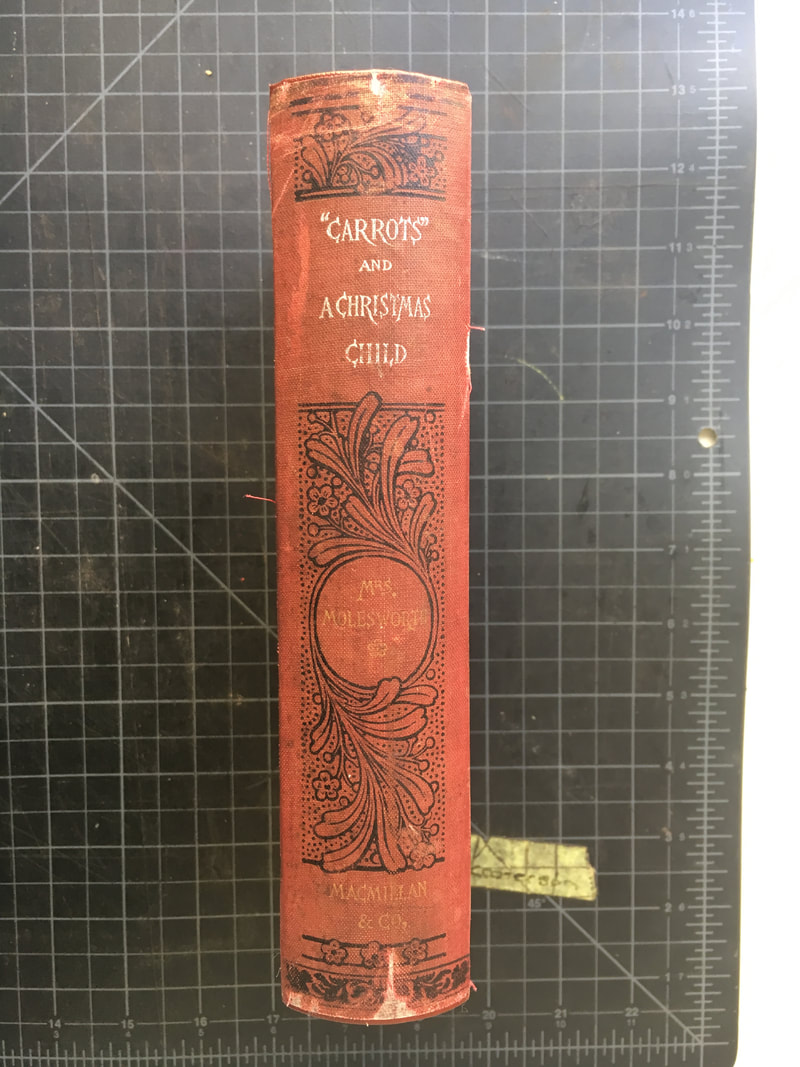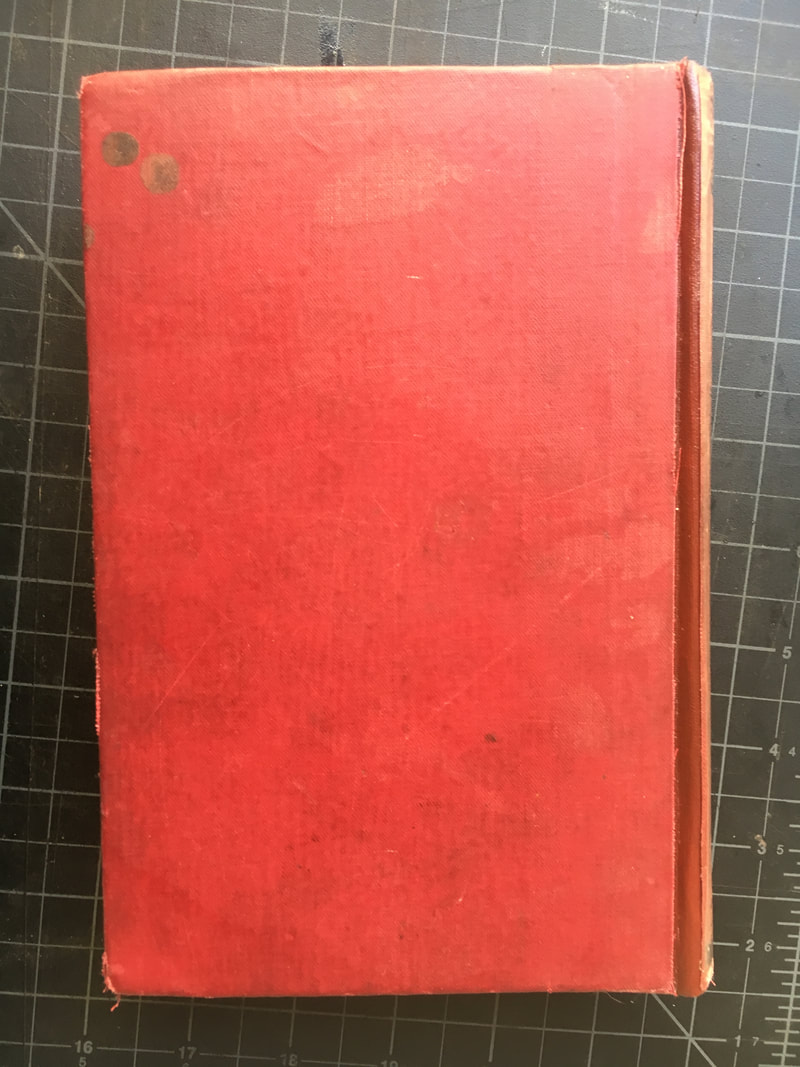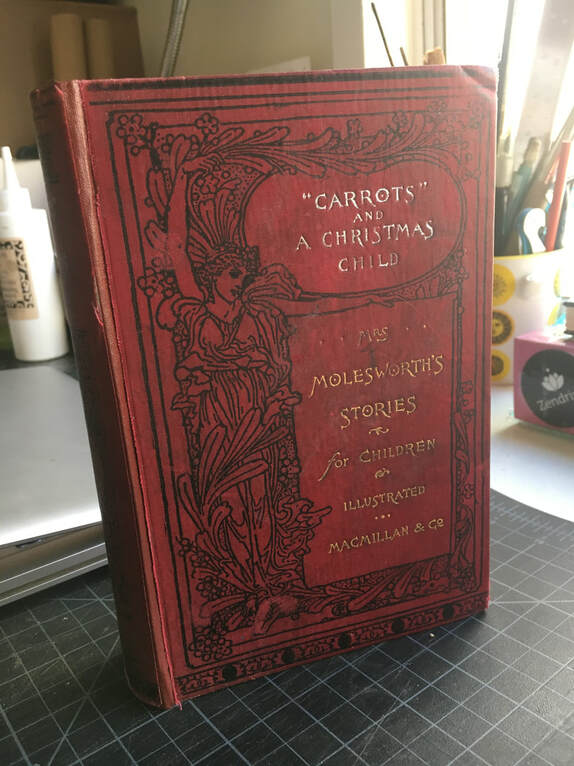|
Welcome to this, the third and final installment of our historical rebinding of Johnson's Dictionary Improved by Todd, Boston, 1828. At the end of Part 2, we had just finished covering the fully disbound, washed, mended, and resewn textblock in new full calfskin. This post will walk through the traditional leather staining, gold-tooling, and final touches undertaken to bring the binding to completion.
2 Comments
Welcome to Part 2 of our historical rebinding of Johnson's Dictionary Improved by Todd, published in Boston in 1828. Last week, at the close of Part 1, our dictionary had been removed from its original decrepit covers, washed, guarded, mended, and reassembled into the neat little textblock pictured above. This week, we finally moved our project from loose leaves back into a bound state, and what a pleasure it is to be back in one piece!
Just as the leaves began to change here in Boston, swashing an already beautiful skyline with a whole new set of colors, our studies at NBSS transitioned from the millimeter bindings of the early 20th century to the full calf bindings of the 18th. Sewn on raised or recessed cords, trimmed in boards, covered with undyed skin and stained with mild acids after covering, the structure was as foreign as it was satisfying to complete. After a few models to get a hang of the processes, I decided to dive into my own collection and rebind a sorry volume of my own from the early 19th century in this style, repeating many of the binding processes that it had first undergone nearly 200 years ago.
Anyone who handles old books knows the above images well: the spine lining, glue, or endsheets on that 20th-century case binding have finally given out, and the textblock has all but ripped itself out of its covering. If the cloth case is also in tatters, a cloth re-back is often the surest course of action to get the book back into working order. Oftentimes, however, when it's only the cheap mull or excessive hide glue that have loosed the book from its place, the case itself is in more or less perfect order, and it seems a shame to carve it up to complete a full re-back. Enter the Cloth Re-casing, a sort of modified reback procedure that offers the strengths of a full reback while maintaining even more of the original case materials, resulting in an almost invisible repair.
Reproduced from a paper I wrote for Michael Greer's 'Technology of the Book' course at the University of Arkansas at Little Rock in Fall 2018. Consider yourself standing in a library - you’re sure to have little trouble visualizing the scene. The organization of the shelves, the volumes lined up all the way down the rows, titled along their spines for fingers and eyes to pass over… this setting is nearly as iconic as the book itself. In the infancy of the book as we know it, however, libraries were not nearly so orderly. Massive vellum tomes bore metal knobs and latches to keep them closed and protected as they lay flat across their faces, chained to their shelves, oftentimes too heavy to move. The Renaissance poet Petrarch is known to have nearly lost his legs after dropping a volume of his own inscription on them as he pulled it from the shelf (Brassington 94, Cundall 9). From its birth in the 4th century, the flat-form book endured 1200 years of bondage before finally assuming the noble, upright stance we take for granted today.
At long last, a classic dust jacket is freed of its pressure-tape mummification and returns to its corner store display a little more lively than it was a month ago.
I'm currently in hot, slow pursuit of a dairy-related enamel sign screwed to a seemingly decades-unused wooden door in an alley on Boston's North End, less than a block from the North Bennet Street School. While making my way back from yet another attempt at first contact, I spied this familiar title, in a sorry state, through the window of souvenir shop next to The Paul Revere House. A damaged book with a story based in Boston, during my first month in the city for a book restoration program? They say there're no such things as coincidences...
A couple years ago in San Francisco, a friend and I stumbled across an antique storefront's going-out-of-business sale in a warehouse in SOMA. It always fascinates me to think about how all these strange objects from across huge swaths of time and space and culture can end up sitting side-by-side, to consider their converging histories. Maybe a thing is a new arrival to the shelves and crates, just recently pulled from circulation, or maybe it's been sitting there since the beginning, waiting to be recognized for something - usefulness, beauty, novelty, curiosity - once again. I found a couple of black cloth, gold-stamped photo albums in less than fair condition, pasted full of black and white images from the ~1900s-1930s. That potentially permanent recorded evidence of so many single moments in time, with all the context packed into those pieces of paper, is a time capsule, proof of existence, for whatever that's worth. The doers - the picture takers and takees - felt it valuable enough to record, and I have a strong reverence any figment of personal creativity actualized, for the inspiration potential of any publicized idea. I bought the albums, a few dozen memories of ancient strangers, with the intention of cleaning them up a bit and giving them a place to stay for a while.
While in DC, a friend put me onto this fascinating volume, the so-called 'Jefferson Bible'; Thomas' own re-interpretation of Jesus' teachings extracted from Greek, Latin, French, and English versions of the New Testament. Jefferson's Bible focuses on Jesus' moral lessons and almost entirely excludes passages regarding divinity or the supernatural, ie the philosophy rather than the dogma. With beautiful red leather boards, edge-gilding, and marbled endsheets, this will be a perfect candidate for a leather reback - reusing all the original elements - once I've settled into my new home in Boston and can retrieve my tools and materials from storage!
'Carrots' came to me in decent shape from a $1 sale, but the joints were torn and the textblock was solid be separated from the covers. Here's the completed reback. After the endbands, the spine was lined with another layer of kozo paper, then linen, then paper. A new spine piece was fitted into the boards, new spine cloth was toned to match the existing cloth, then everything was slid, glued, and pressed together.
|

